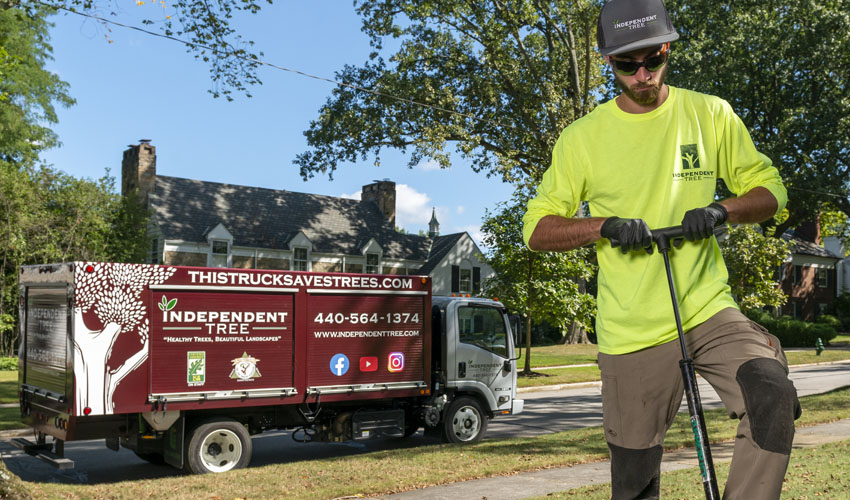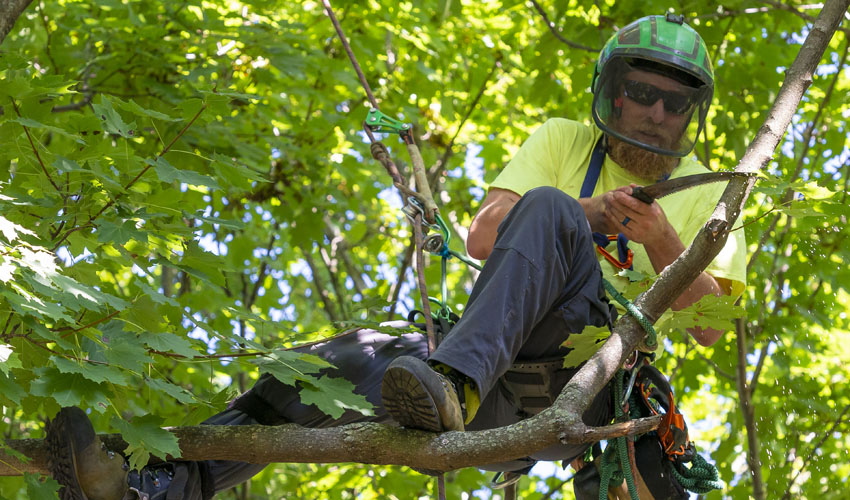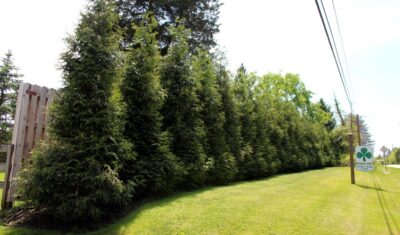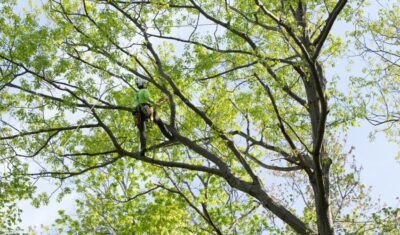
Maybe you’ve heard people refer to Integrated Pest Management (IPM) as a way to improve and manage the health of gardens and trees, or maybe you’ve never heard of it at all. It’s an important part of creating a healthy and beautiful landscape using the least toxic and more sustainable methods possible. In this article, we share all the details about IPM as it relates to your trees (it also applies to other plants on your property).
What is Integrated Pest Management?
IPM is part of our Plant Health Care (PHC) program that helps prevent major tree problems from arising in your garden. It uses an organized annual schedule of inspections and management to stay ahead of any issues.
The main benefits of IPM are that it uses:
- targeted treatments that affect only the pest or disease being treated, and
- preventive measures to avoid problems developing in the first place.
And because IPM is part of the complete approach to maintaining your yard and garden, it doesn’t focus on pesticide use as a solution to everything. This benefits you and your family, your property, and the environment. We all win!
Why is monitoring such an important part of IPM?
A key part of both IPM and PHC is monitoring your trees and shrubs throughout the year.
Taking time to check your trees for general vigor, pests, and diseases is like getting check-ups with your doctor. The goal is to maintain good health and prevent sickness, instead of treating serious conditions after they happen.
Wouldn’t you rather get a flu shot than get treated for a bad case of flu? It’s the same idea with IPM: use preventive measures to help ward off serious conditions.
What’s involved in monitoring as part of an IPM program?
Healthy trees are more able to resist insect pests, so we start with general tree health. Below are some of the things we monitor for.
- Are your trees pruned correctly? Pruning for light and air to enter your tree’s crown, and to get rid of crossing, damaged, infected or overloaded branches, means your tree is already prepared to withstand wind storms, bacteria and fungi, and insects.
- Are there any broken branches or wounds that leave openings for pests to enter your tree? Corrective pruning and preventive sprays can keep insects out, especially during their most active periods
- Do you have any particularly susceptible tree species? If so, we plan ahead to monitor them for specific pests, according to the species’ growth habit.
- Are there likely to be over-wintering insects? Fall cleanup and non-toxic horticultural sprays on dormant trees may stop a spring population explosion before it starts.
- Expecting hot weather? We usually do get hot weather in summer. Having well-mulched soil and the right irrigation ready in early spring can prevent later water stress in trees, making them more resistant to insects.
By asking questions like these and addressing them early, we can use our organized plant health care plan to maintain your trees and prevent serious damage from developing in the first place. That’s why every plan is carefully tailored to your garden – no two properties are the same, so no two PHC plans are identical.
Our Plant Health Care professionals have experience with a wide range of tree and shrub species, fertilization methods, insect and disease identification, soil health, irrigation, and tree pruning, and all of that knowledge is part of IPM and our PHC plan.

Proper pruning is an important part of IPM and Plant Health Care
How does integrated pest management work?
Just like there’s no one single food that will keep you healthy, there’s no one single solution to insect pests in your yard. IPM plans for long-term effectiveness against pests by combining a number of approaches. These include:
Selecting only pest- and disease-resistant varieties of trees, and species that do well in our northeast Ohio climate
We know trees, and we keep up on new varieties. We can help you choose trees whose vigor and adaptability make them more pest-resistant from the start. If you start with healthy, resistant trees and shrubs, and species that insects don’t like as much as others, you’ve already reduced the chances of insect infestations.
Regular inspections of your trees to check for insect pests and general health
Knowing what each season brings, and what pests to look for, means our regular inspections are focused and we can stop pest populations before they exponentially expand. Monitoring insects means we can track their presence, and know exactly when to start treating them.
Using non-toxic, preventive pest control measures before insects become a problem
We use sticky traps, lures, barriers, and non-toxic measures in your trees to keep insect populations from gaining a foothold. Sometimes that’s all that’s needed to prevent an infestation.
Using organic pesticides as a final, instead of first, solution
Sometimes pesticide use is necessary and, applied judiciously, pesticides can be effective without significant negative consequences. We use IPM with the goal of reducing pest populations, not eradicating them, to a level that will not damage your plants. After scouting your landscape plants, and when other control measures have not worked, pesticides may be used as a spot treatment for control.
When should I begin an IPM program?
You can read more about our schedule of seasonal treatments here. Our customers who use our PHC plans are always scheduled in advance for these regular treatments. It may be winter now, but insect pests are waiting for spring just like you are.
An important thing to remember is that we can’t always schedule a last-minute or emergency visit, so reducing the likelihood of emergencies through integrated pest management and comprehensive plant care means we can all reduce our stress levels!
Protect Your Trees Without Harming the Environment
Sign up for a Plant Health Care plan or schedule your IPM treatments today. Contact our office for more details or to schedule a property assessment.Recent Articles
Topics
About The Author

STAY IN THE LOOP
WITH OUR
LATEST UPDATES
"*" indicates required fields






